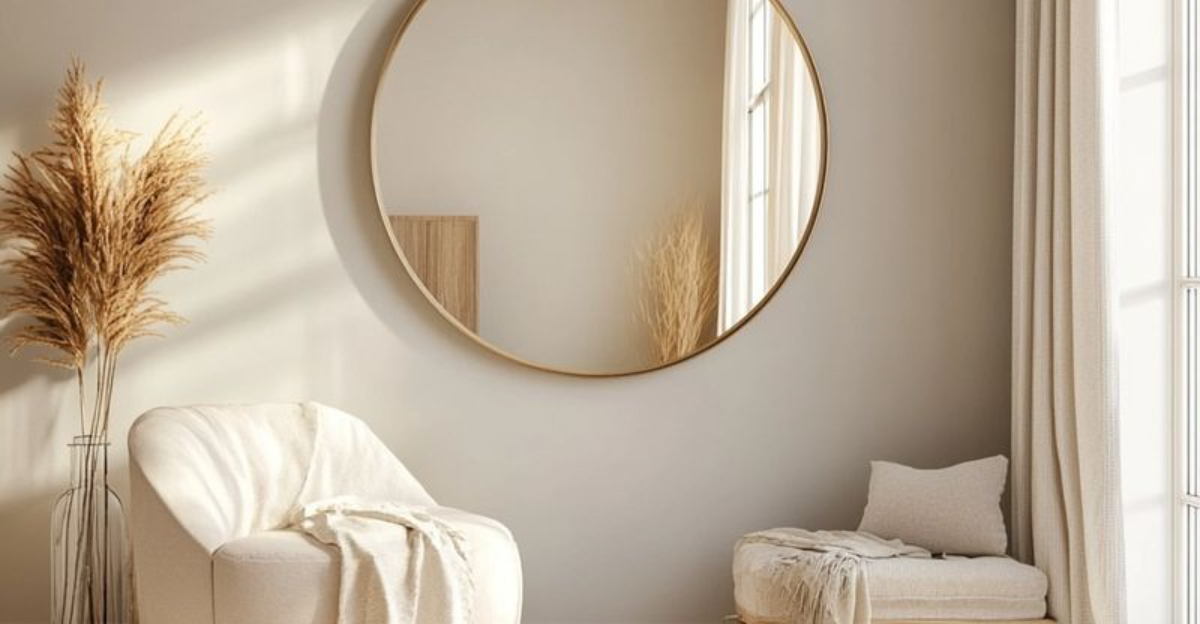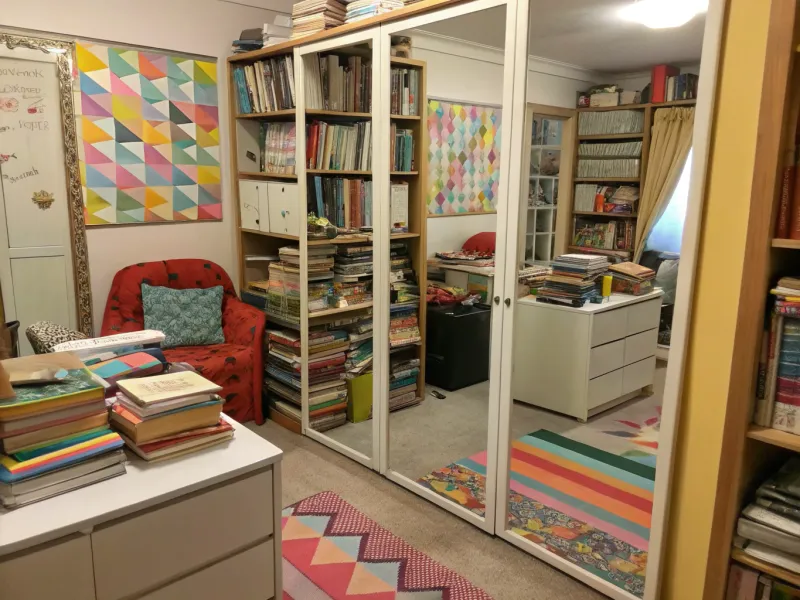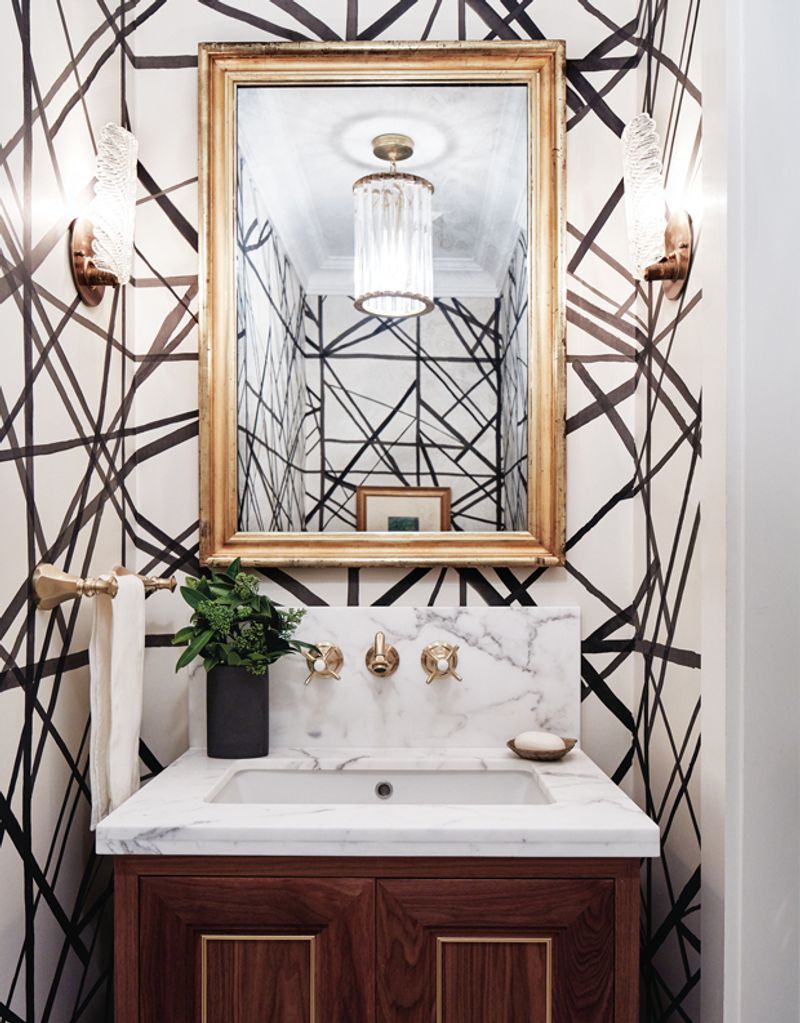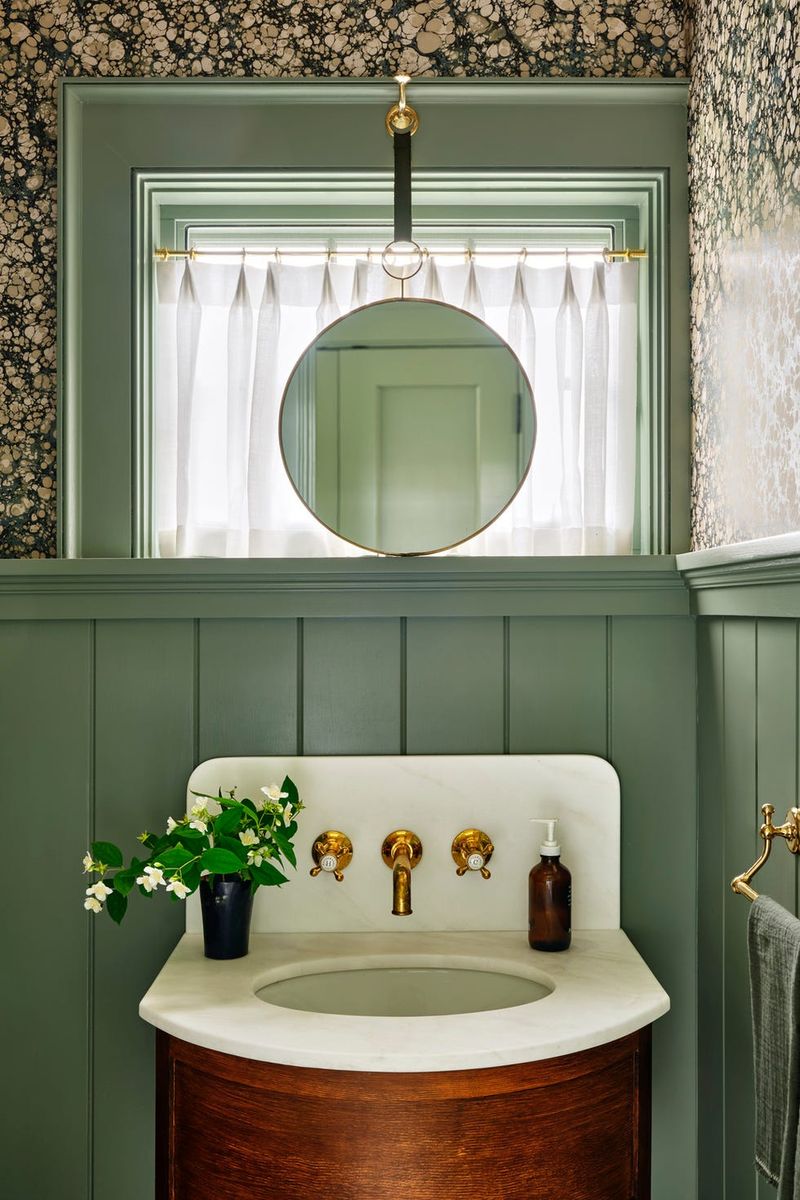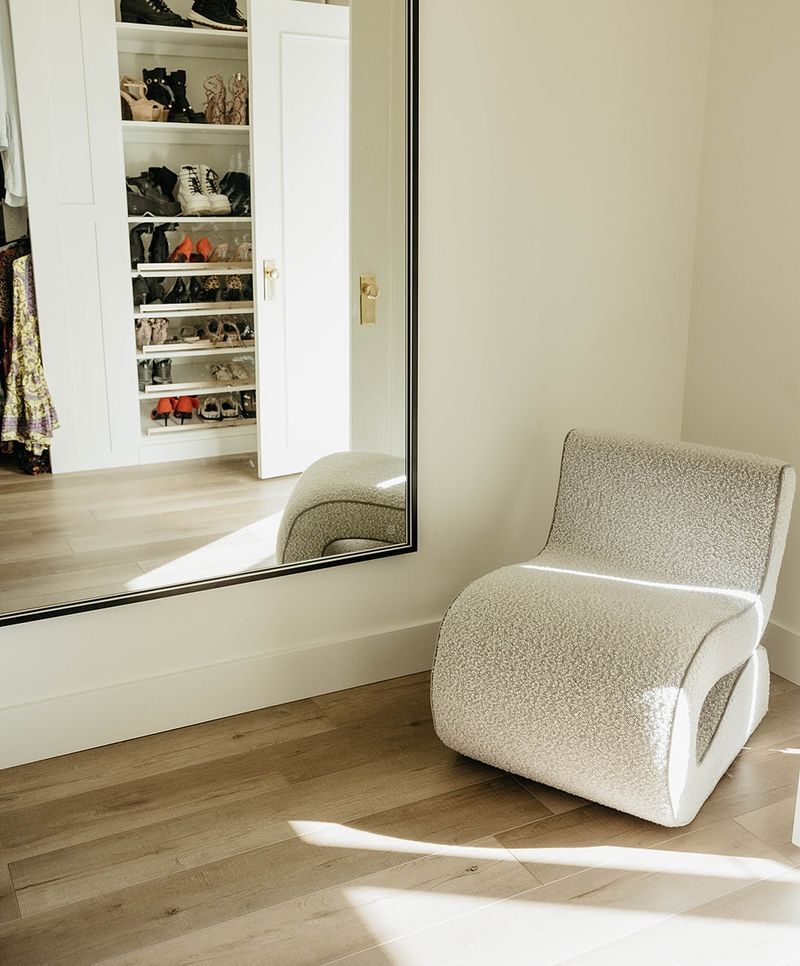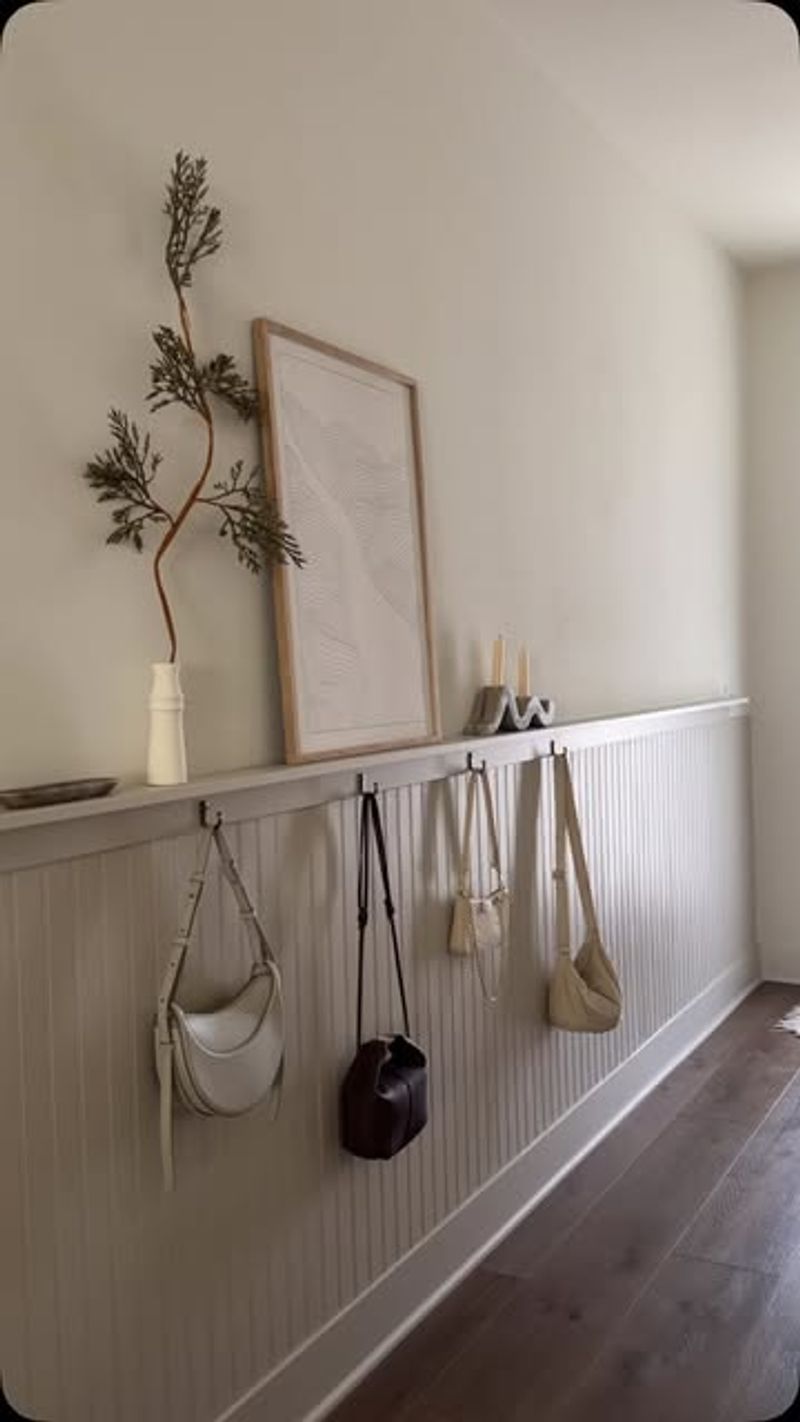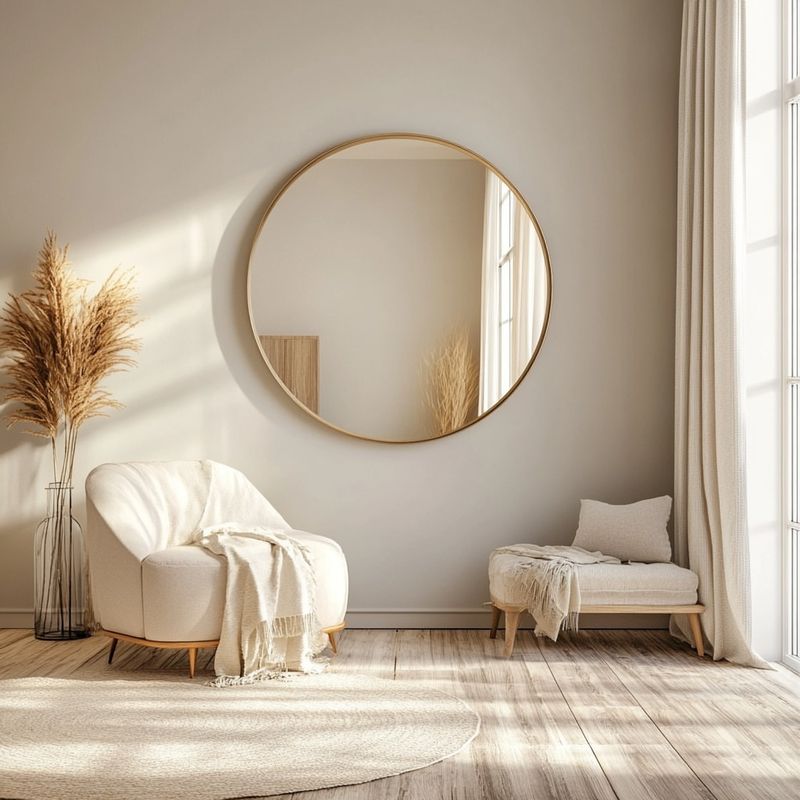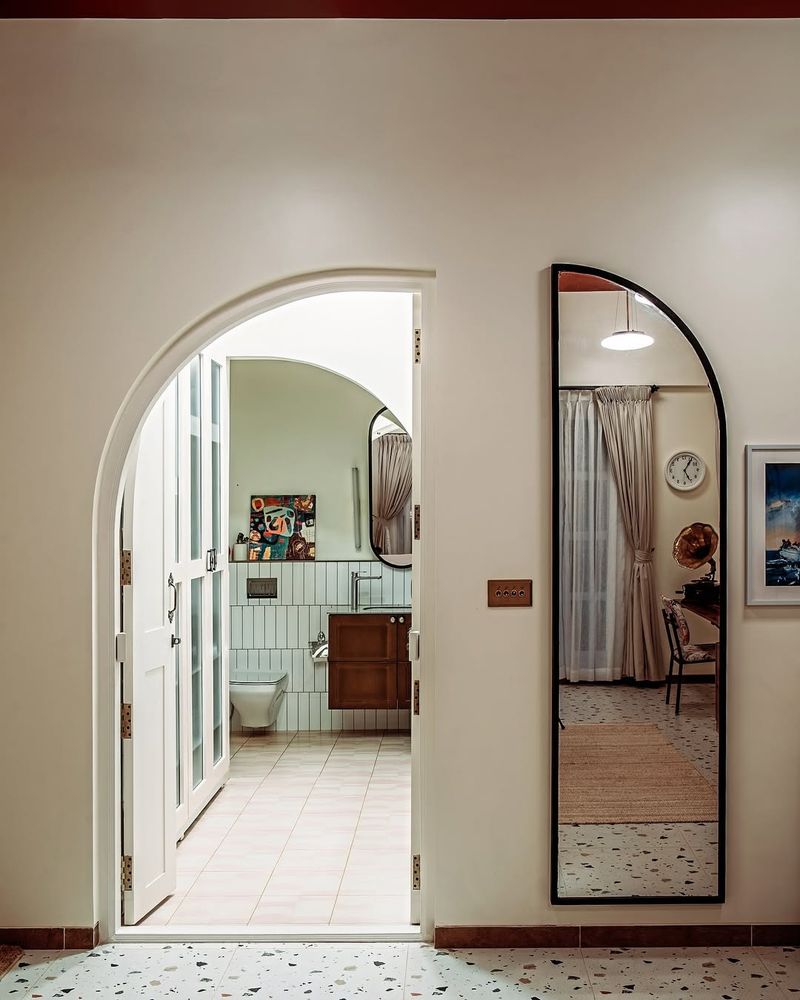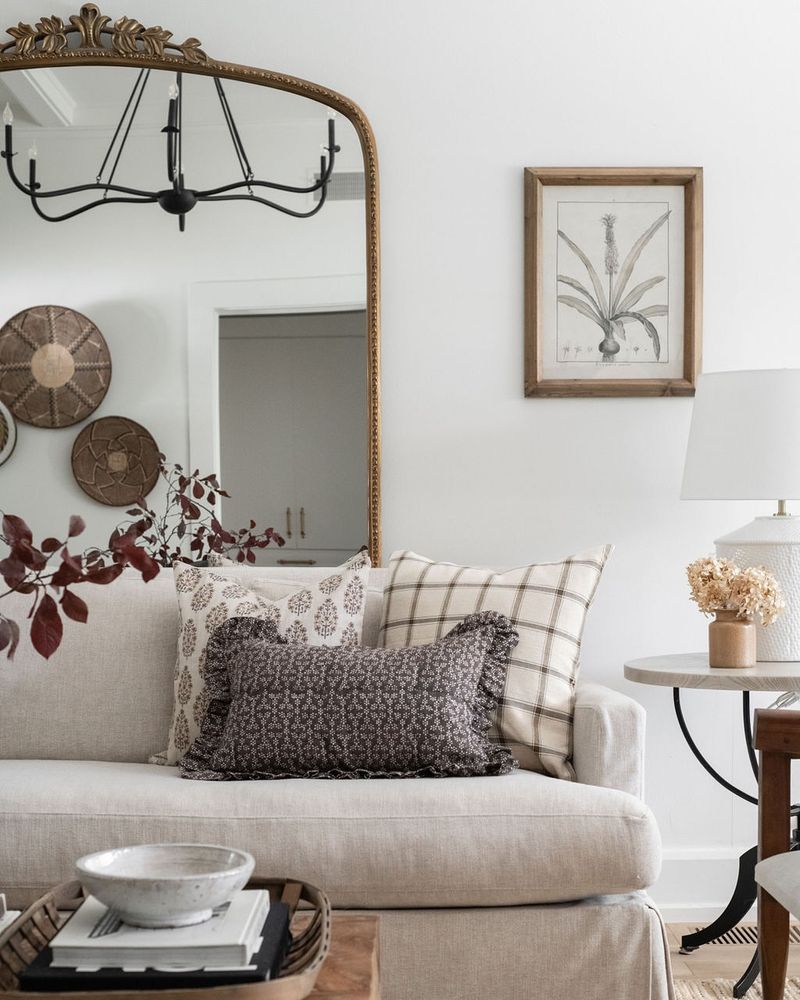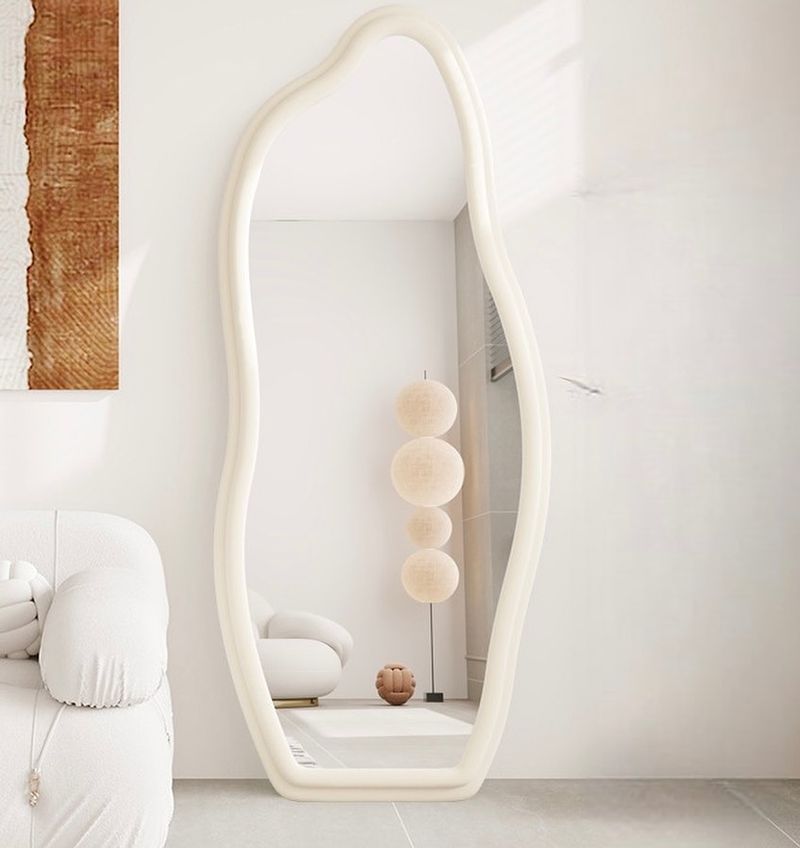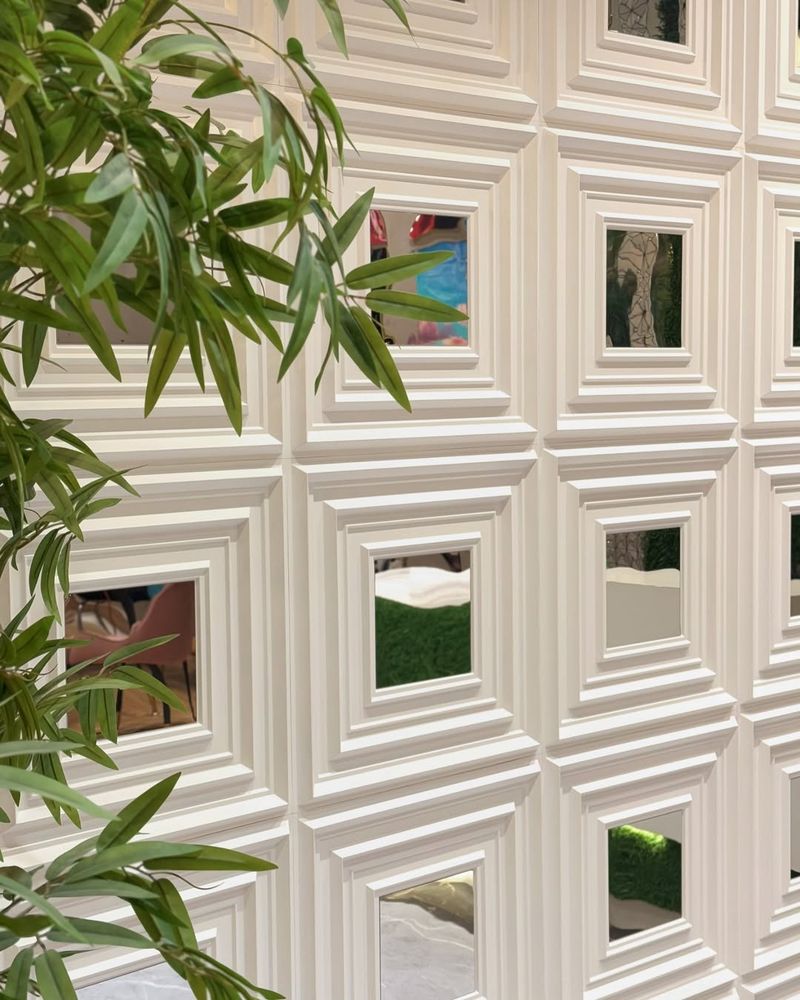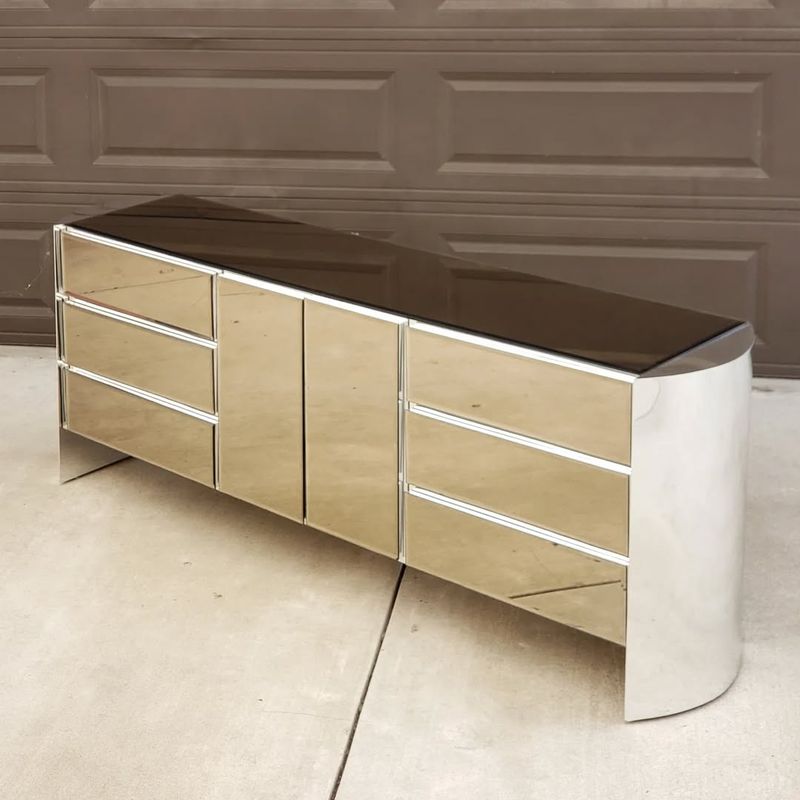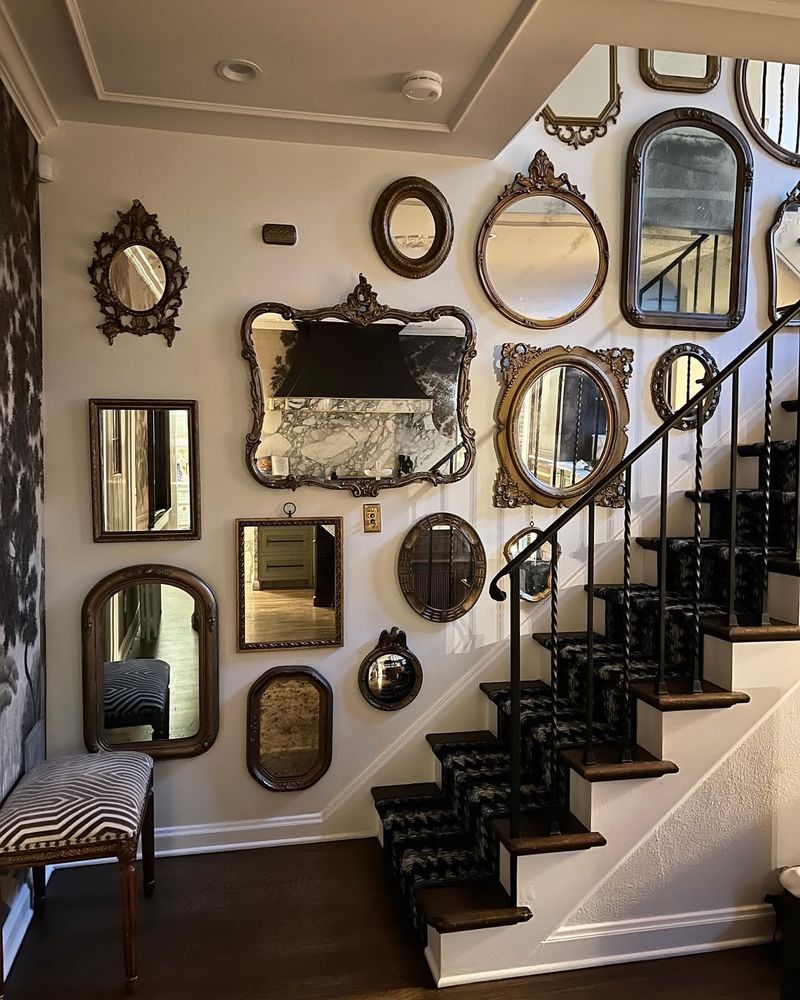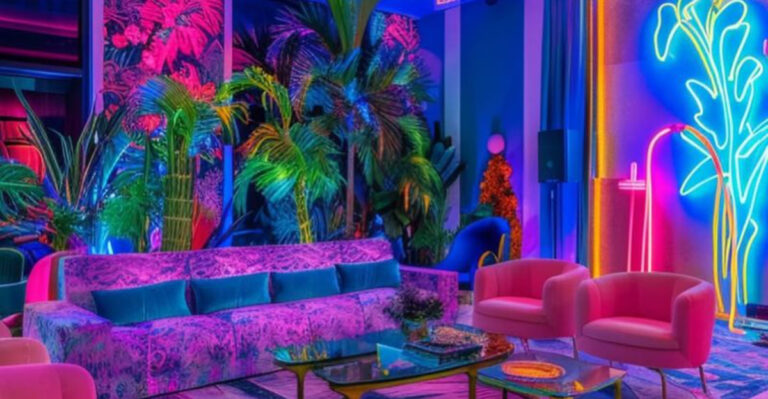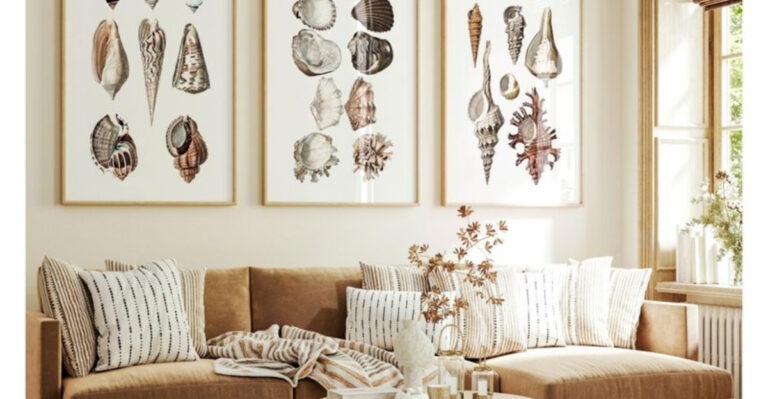8 Ways In Which Mirrors Actually Make Your Space Smaller And 8 That Make It Feel Much Bigger
Mirrors are like the magical tricksters of interior design. They’re praised for opening up rooms, bouncing light, and adding a touch of glam – but what if they’re secretly making your space feel smaller? Yep, not all mirror placements are created equal.
Depending on where and how you use them, mirrors can either expand your space or close it in. Whether you’re trying to make a tiny room feel bigger or wondering why that sleek wall mirror feels a bit…off, I’ve got you covered.
Here are 8 mirror mistakes that might be shrinking your space – and 8 clever fixes that make it feel wonderfully open.
1. Reflecting Clutter
When placed poorly, mirrors can reflect clutter rather than open space. Imagine a room filled with bookshelves and knick-knacks.
If a mirror captures this scene, it doubles the mess visually, overwhelming the senses. Instead of expanding horizons, it multiplies chaos.
So, tidy up before hoping for a mirror to work wonders!
2. Overwhelming Patterns
Patterns can be delightful, yet when mirrors reflect them, the impact can be jarring. Think of a room with bold wallpaper dotted with zigzags or stripes.
Gigantic mirrors will duplicate these patterns, potentially overwhelming the viewer. To mitigate this, opt for simpler, more consistent decor. Mirrors work best reflecting serene, uncluttered scenes.
3. Creating Illusions of Clutter
Even minimalists aren’t safe from a mirror’s potential trickery. A sleek, modern room may appear cluttered if a mirror reflects an untidy adjacent space. Suddenly, the tidy room seems overrun with chaos.
Mirrors can, ironically, introduce clutter where there is none. Check your mirror’s angle! Ensure it’s capturing the tranquil parts of your space, not the chaos next door.
4. Magnifying Smallness
In theory mirrors should amplify space, but in cramped quarters, they can backfire. When a small room’s mirror reflects its own limited dimensions, it magnifies the sense of tightness.
An ill-placed mirror doubles every inch of a tiny area, reinforcing the feeling of being boxed in. Perhaps rethink mirror placement in snug spaces.
5. Highlighting Imperfections
Mirrors don’t lie, and that can be problematic. They highlight imperfections like cracks, stains, or peeling paint. Instead of opening up a room, they may draw attention to flaws you’d prefer to hide.
Consider where your mirrors point. If they’re reflecting a less-than-perfect wall, they might not be doing you any favors.
6. Absorbing Light
We all know that mirrors are known for bouncing light around a room, but sometimes, they fail at their job. In large, dark spaces, they might absorb more light than they reflect, contributing to a dim ambiance.
You might expect a brighter room, but if the mirror’s reflecting a dark wall or shaded corner, it won’t illuminate much.
7. Large Mirrors Dominating
Bigger isn’t always better. A massive mirror in a small room can feel imposing, eating up wall space and drawing attention to itself in a way that’s more distracting than stylish.
Rather than making the room feel spacious, it becomes all about the mirror. When a reflective surface becomes the main event, it can throw off the room’s balance and make the rest of the space feel insignificant or tight.
8. Mirrors in Narrow Hallways
In a tight hallway, adding a mirror might seem like a smart way to create the illusion of more space. But if it reflects a blank wall or repeats the narrow shape, it can actually exaggerate the tunnel effect.
Instead of opening things up, it can emphasize how slim and enclosed the area really is. That reflection doesn’t bring in light or interest – it just echoes the cramped feel, making the hallway seem even longer and more confined.
1. Mirrors That Reflect Natural Light
When placed opposite a window, a mirror can amplify natural light throughout the room. It’s like giving the sun a second chance to shine.
The reflection makes the space feel brighter, airier, and more expansive – especially during daylight hours. That extra glow helps soften shadows and blurs boundaries, tricking the eye into perceiving more room than there actually is.
It’s one of the simplest ways to add depth without adding square footage.
2. Strategic Placement
A well-placed mirror can visually extend a room by reflecting open space or attractive architectural features. If there’s a doorway, an arch, or a piece of decor that adds dimension, capturing it in a mirror makes it feel like the room continues beyond its actual walls.
This illusion of extension breaks up tight corners and adds a sense of layering, giving your eyes more room to roam – even when the space is physically limited.
3. Mirrors Behind Furniture
Sliding a mirror behind a console table, dresser, or sofa can make a wall recede visually. Rather than feeling like the furniture is pressing forward into the room, it appears to float slightly, creating a subtle illusion of depth.
It’s a trick that works especially well in apartments or smaller homes where bulky pieces can easily dominate. The mirror adds just enough light and reflection to soften their presence without overwhelming the design.
4. Floor-Length Mirrors Create Vertical Space
A tall, full-length mirror leaning against the wall draws the eye upward. That extra height gives the impression of a taller ceiling and helps the room feel more generous overall.
The vertical line is especially helpful in bedrooms or small living areas where things can feel a little short or compressed. Even better if the mirror catches some natural light – it’ll stretch the glow from floor to ceiling.
5. Mirror Panels
Instead of one large mirror, using several mirror panels across a wall can mimic the look of windows or architectural detailing.
This soft segmentation helps elongate the wall visually and creates the impression of a room that continues just beyond the glass. The repeated reflections give the illusion of depth while still feeling stylish and intentional.
6. Mirrored Furniture Blends with the Room
Pieces like mirrored dressers, side tables, or cabinets visually disappear into the room, keeping things from feeling cluttered.
Because they reflect the surfaces around them, they don’t add visual bulk the way solid furniture can. It’s like sneaking in extra storage or function without compromising space.
These reflections bounce light too, which keeps even the corners feeling bright and open.
7. Mirror Gallery Wall
Instead of heavy artwork, a collection of small mirrors with different shapes or frames can create a dynamic, reflective display.
Each one catches light from a different angle, creating layers of sparkle and movement across the wall. It tricks the eye into seeing more angles, more dimension, and more space.
Plus, it adds character without overwhelming a small area – perfect for hallways or above a sofa.
8. Angled Mirrors
Tilting a mirror slightly upward or placing it at an angle can change the way you experience the room’s shape. It can reflect a ceiling, draw focus to a brighter corner, or emphasize height rather than width.
This shift in perspective can stretch the perceived boundaries of the space, making the whole room feel rebalanced. It’s especially handy in odd-shaped rooms where you want to distract from awkward layouts.

